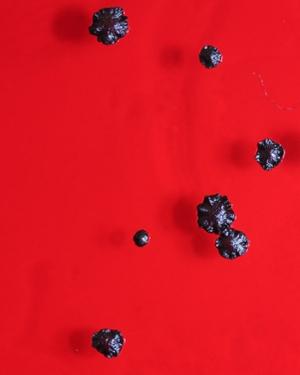Staphylococcus Research
Kenneth Bayles, PhD
My research has focused on the characterization of a novel regulatory system that controls the peptidoglycan hydrolase activity produced by bacteria. Using Staphylococcus aureus and Bacillus anthracis as model systems, we have identified two sets of genes that impact these processes. The first set (the cid and lrg genes) encode membrane-associated proteins that are proposed to function by controlling the access of the peptidoglycan hydrolases to their substrate (peptidoglycan) within the bacterial cell wall. The second set (lytSR and cidR) encodes regulatory proteins that modulate cid and lrg expression in response to physiological signals. Recent studies indicate that these signals include changes in proton motive force and the energy status of the cell. Research on this system has led to the proposal that it comprises the molecular components of bacterial programmed cell death (PCD) and that the cid and lrg gene products may be functionally homologous to the Bax/Bcl family of proteins that control apoptosis in eukaryotic cells.
Vinai Chittezham Thomas, PhD
My laboratory studies metabolic adaptations of staphylococci in response to various biologically relevant stresses. We have recently demonstrated that acetic acid, a byproduct of glucose catabolism, induces a novel programmed cell death (PCD) pathway in staphylococci. Although our studies have shown that acetic acid mediates its effects through intracellular acidification, the role of the acetate anion itself is unclear and an area of active research. In addition, we are currently identifying the molecular components of the PCD pathway and how PCD impacts the bacterial population's fitness. These projects touch upon multiple aspects of bacterial redox metabolism and physiology. Another area of active research involves understanding the physiological significance of staphylococcal nitric oxide synthase. NO is usually toxic to bacterial respiration, and it is unclear why pathogens like Staphylococcus aureus and Staphylococcus epidermidis would carry an enzyme (NOS) that makes NO. We have recently shown that endogenous NO produced by staphylococci is rapidly oxidized to nitrite and the latter species is the physiologically relevant effector of NOS function. We have determined that nitrite stimulates staphylococcal aerobic respiration and growth. How nitrite accomplishes this task is unknown and a topic that is currently being pursued in my laboratory.
 Paul Fey, PhD
Paul Fey, PhD
Investigators in our laboratory address questions related to acquisition of nutrients, specifically secondary carbon and nitrogen sources, and their link to expression of virulence factors within specific niches of the host. Current studies are centered in understanding amino acid and peptide catabolism, but can extend to a variety of compounds. Recent published studies have identified major pathways that S. aureus utilizes to catabolize amino acids, but larger questions exist regarding whether staphylococcal proteases cleave specific proteins at the site of infection to gain access to these nutrients. Other studies in the laboratory are investigating questions related to colonization of various staphylococcal species on the surface of the skin. What is their function and how do they survive? Is species diversity important? Is the mechanism of adherence to the skin surface conserved across all staphylococcal species? Our laboratory and the Center for Staphylococcal Research is highly collaborative and gives pre- and post-doctoral trainees opportunities for travel to study in various laboratories worldwide. (Image above: Staphylococcus epidermidis on congo red agar.)
Tammy L. Kielian, PhD
The Kielian laboratory investigates S. aureus-leukocyte crosstalk with the goal of identifying novel therapeutic approaches to treat biofilm infections. Of particular interest is characterizing biofilm-derived molecules that polarize immune cells (i.e. macrophages and myeloid-derived suppressor cells) towards an anti-inflammatory state to promote biofilm persistence. Much of what we have learned in this regard has been achieved by designing screens of the Nebraska Transposon Mutant Library (NTML) where the majority of non-essential genes of S. aureus have been inactivated. This approach has identified novel functions for biofilm metabolites and toxins in mediating immune deviation and biofilm persistence in an immune competent host. Our expertise in immunology, coupled with in vivo mouse models of biofilm development and access to tissues from patients with biofilm infections, allows us to investigate the crosstalk between S. aureus and the host with the ultimate goal of identifying new targets to thwart these chronic and devastating infections. More can be read about Dr. Kielian's research listed under Host-pathogen Interactions and Innate Immunity.
Marat R. Sadykov, PhD
My research is focused on understanding the physiological and metabolic processes governing fitness, virulence, and versatility of Gram-positive bacterial pathogens. Specifically, I am interested in: i) regulation of staphylococcal carbohydrate metabolism in response to various environmental cues and its contribution to fitness, virulence determinant production, and pathogenesis during infections; ii) metabolic and physiological basis of staphylococcal biofilm formation and its role in pathogenesis of biomaterial-related and nosocomial infections. My research interests also encompass contribution of the overflow and central carbohydrate metabolic pathways to fitness and sporulation of Bacillus anthracis.

